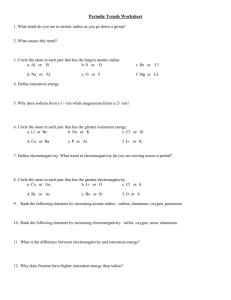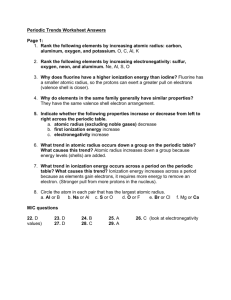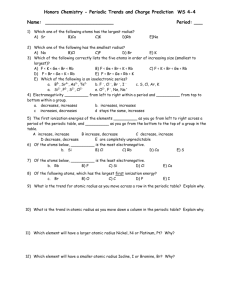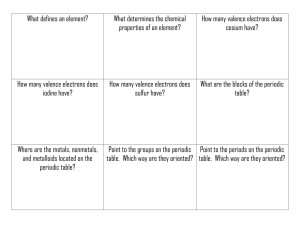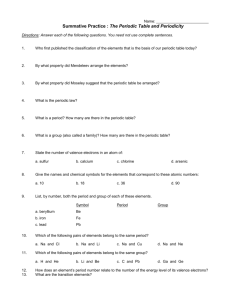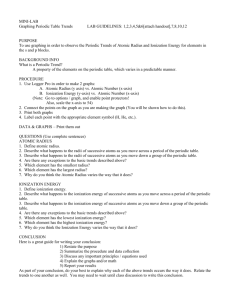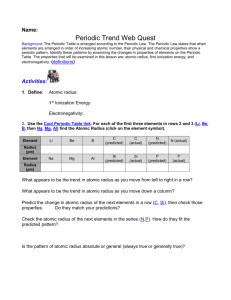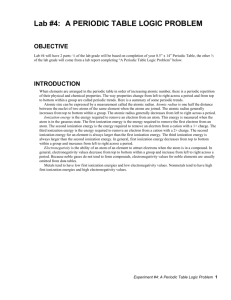File
advertisement
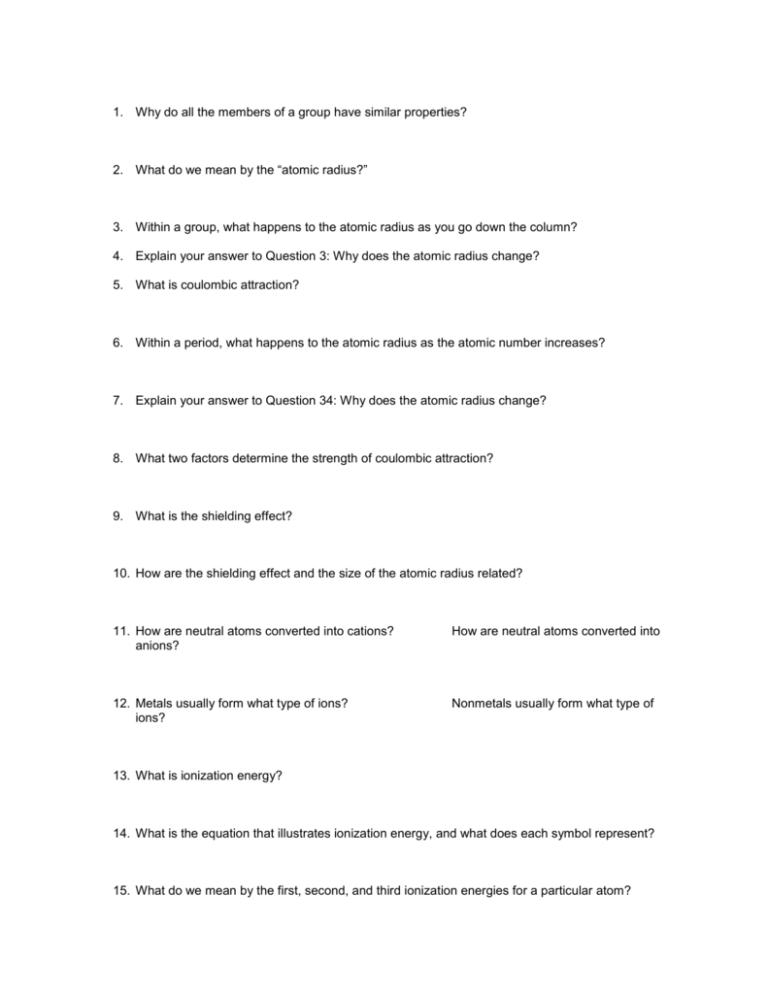
1. Why do all the members of a group have similar properties? 2. What do we mean by the “atomic radius?” 3. Within a group, what happens to the atomic radius as you go down the column? 4. Explain your answer to Question 3: Why does the atomic radius change? 5. What is coulombic attraction? 6. Within a period, what happens to the atomic radius as the atomic number increases? 7. Explain your answer to Question 34: Why does the atomic radius change? 8. What two factors determine the strength of coulombic attraction? 9. What is the shielding effect? 10. How are the shielding effect and the size of the atomic radius related? 11. How are neutral atoms converted into cations? anions? How are neutral atoms converted into 12. Metals usually form what type of ions? ions? Nonmetals usually form what type of 13. What is ionization energy? 14. What is the equation that illustrates ionization energy, and what does each symbol represent? 15. What do we mean by the first, second, and third ionization energies for a particular atom? 16. Why does each successive ionization require more energy than the previous one? 17. What is the general trend of ionization energy as you go from left to right across the periodic table? 18. What is the general trend of ionization energy as you go down a group on the periodic table? 19. Which of these elements has the highest first ionization energy: Sn, As, or S? 20. When an atom becomes an anion, what happens to its radius? 21. When an atom becomes a cation, what happens to its radius? 22. For each of the following pairs, circle the atom or ion having the larger radius. a. a. S or O2– b. b. Ca or F1– or or O Ca2+ c. Na1+ d. Na K1+ or e. S2– or K f. F 23. For each of the following pairs, identify the smaller ion. a. a. K1+ or F1– b. b. F1– or or Ca2+ c. C4+ or C4– e. O2– or Cl1– d. S2– or F1– f. Fe2+ Fe3+ 24. Where, generally, are the metals located on the periodic table? 25. Where, generally, are the nonmetals located on the periodic table? 26. A. List some properties of metals. a. B. List some properties of nonmetals. b. C. What kinds of properties do metalloids have? 27. What is electronegativity? 28. Who determined the scale of electronegativity most often used today? 29. List the following atoms in order of increasing electronegativity: O, Al, Ca 30. List the following atoms in order of decreasing electronegativity: Cl, K, Cu 31. What is the general trend of electronegativity as you go down the periodic table? 32. 60. What is the general trend of electronegativity as you go left to right across the periodic table?
